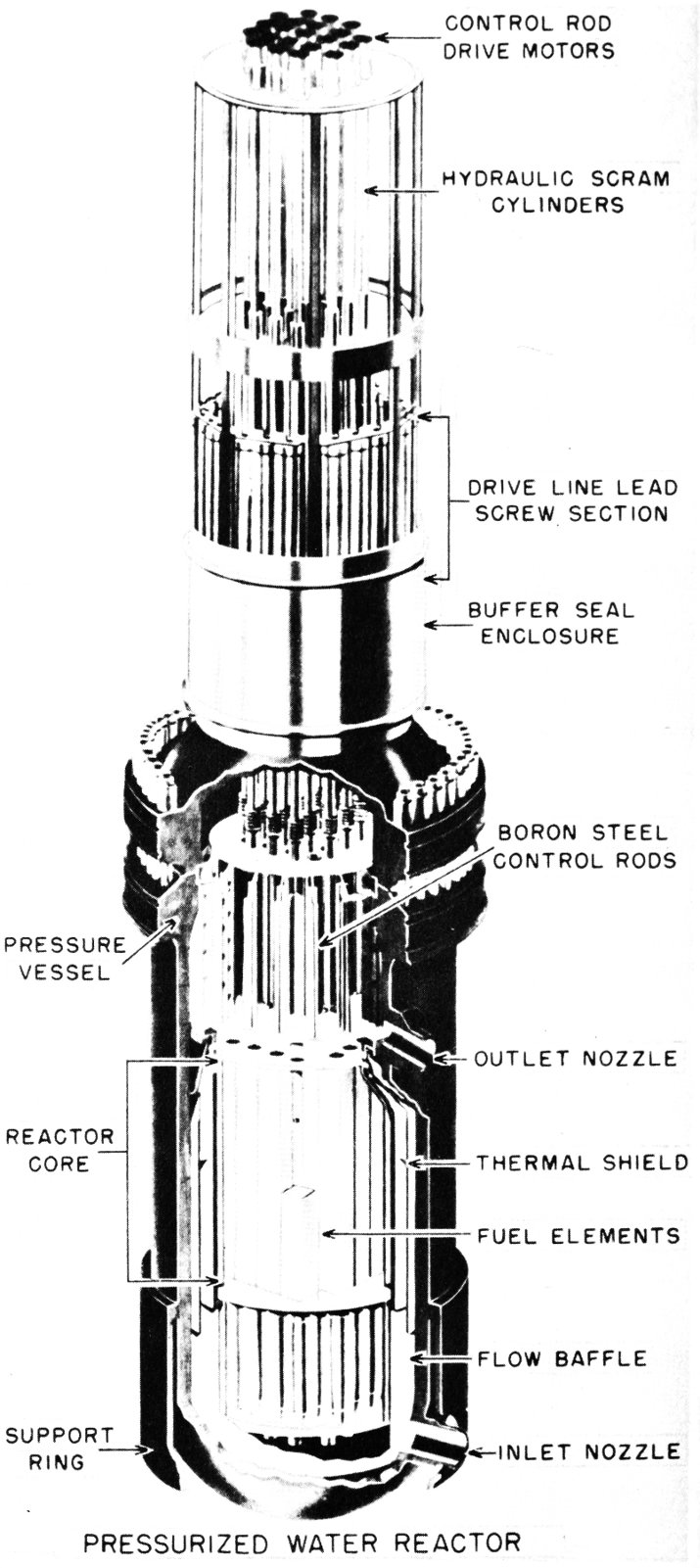
the
nuclear ship
SAVANNAH
first atomic merchant ship
one of the world’s
SAFEST
ships
U.S. DEPARTMENT OF COMMERCE
Frederick H. Mueller, Secretary
MARITIME ADMINISTRATION
Ralph E. Wilson, Chairman, Federal Maritime Board
and Maritime Administrator
ATOMIC ENERGY COMMISSION
John A. McCone, Chairman

Multiple advanced electronic and mechanical safety devices guardthis “atomic heart.”
- CONTROL ROD DRIVE MOTORS
- HYDRAULIC SCRAM CYLINDERS
- DRIVE LINE LEAD SCREW SECTION
- BUFFER SEAL ENCLOSURE
- BORON STEEL CONTROL RODS
- PRESSURE VESSEL
- OUTLET NOZZLE
- REACTOR CORE
- THERMAL SHIELD
- FUEL ELEMENTS
- FLOW BAFFLE
- SUPPORT RING
- INLET NOZZLE
- PRESSURIZED WATER REACTOR
The N.S. SAVANNAH, the first nuclear-poweredcargo-passenger ship, is one of the safest seagoing craftin the world.
This is the result of careful and deliberate planning.
Every appropriate safety device, factor, and techniquewere sought in the design and planning stage,and the ship’s construction has probably been moreclosely and intensively inspected, tested, and scrutinizedthan that of any other merchant ship ever built.
SAFETY POLICY BASIC
The Declaration of Policy of the Merchant MarineAct of 1936 calls upon the Maritime Administration forthe promotion and maintenance of an American MerchantMarine for trade and defense “composed of thebest equipped, safest, and most suitable types ofvessels.”
The Atomic Energy Commission is engaged in theN.S. SAVANNAH project as a part of its responsibilityunder the Atomic Energy Act of 1954 “to encouragewidespread participation in the development and utilizationof atomic energy for peaceful purposes to themaximum extent consistent with the common defenseand security and with the health and safety of thepublic.” The Commission has the responsibility ofproviding a safely operable nuclear power plant forthe vessel; instructions and regulations for the dispositionof wastes; the use, handling, and disposal of source,special nuclear, and by-product material; and thehealth and safety aspects associated with theseresponsibilities.
Ship safety ashore, abroad, on the high seas, and inport is of major interest to the Maritime Administration,the Atomic Energy Commission, the U.S. CoastGuard, the Public Health Service, and such privateagencies as the American Bureau of Shipping.
The N.S. SAVANNAH is constructed to meet or surpassevery standard set by all of these responsibleagencies and will have a substantial built-in safetymargin in excess of the most stringent requirements ofapplicable standards, which are among the highest inthe world. Where there were no existing standardsevery precaution in keeping with sound ju